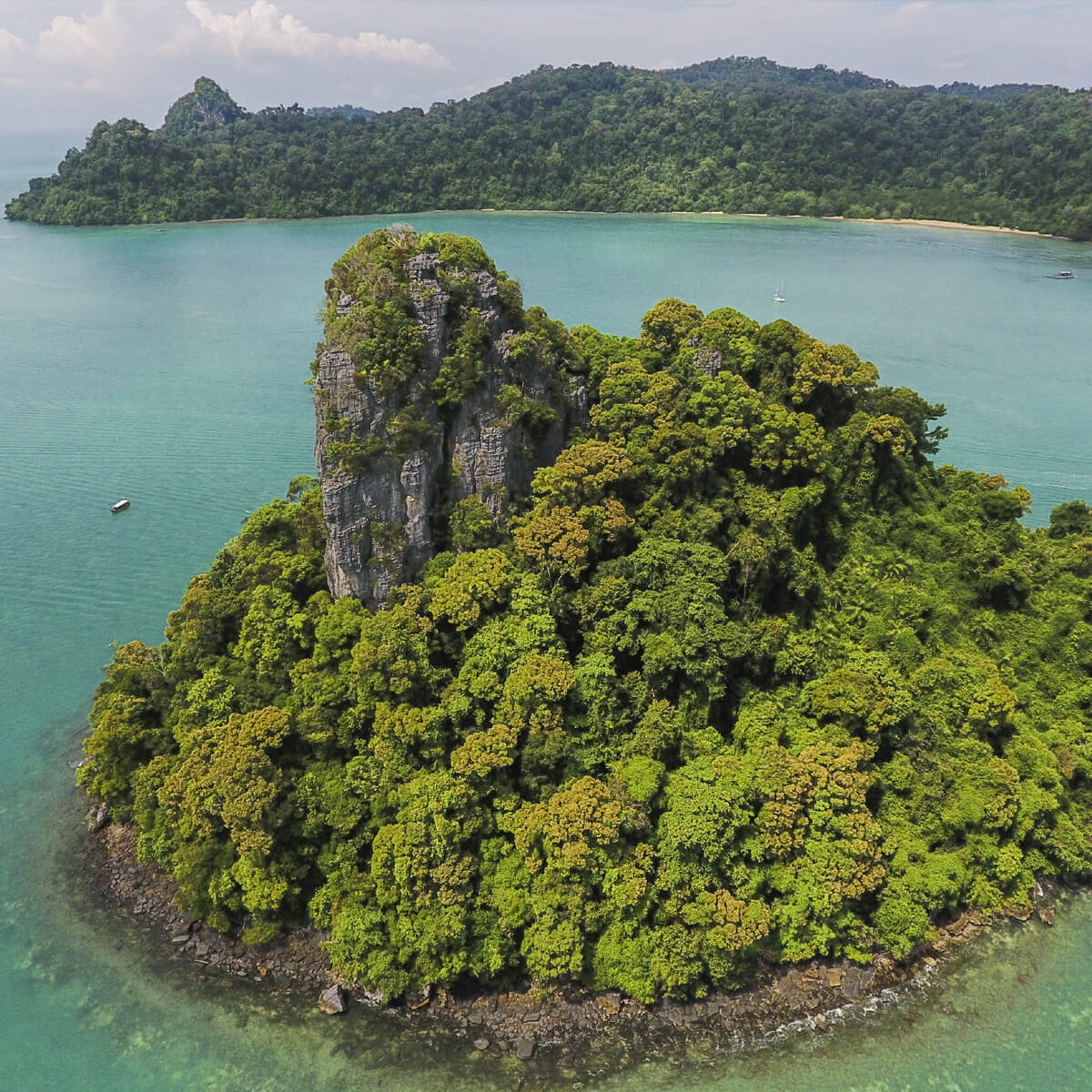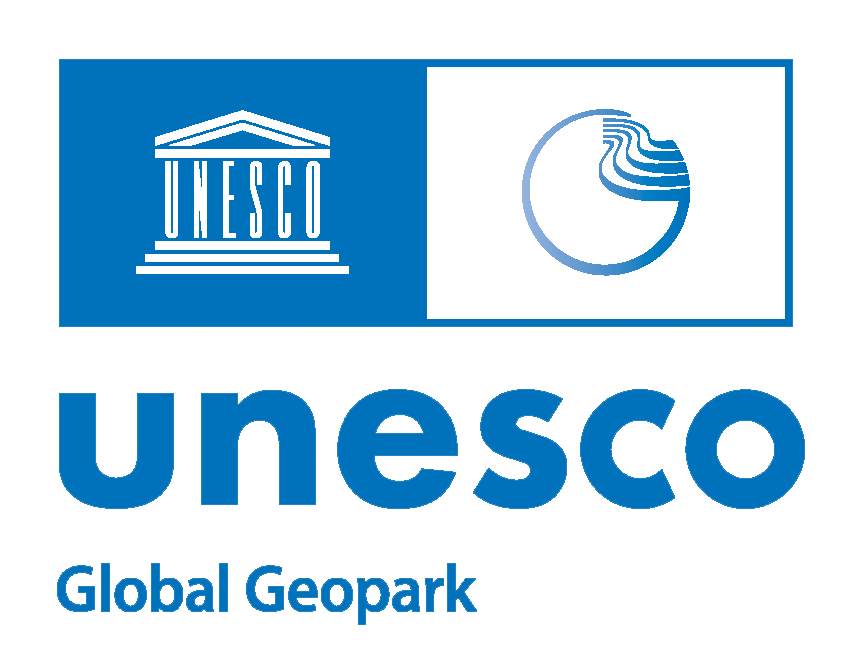
PULA SINGA KECHIL KARST TOWER GEOSITE
This geosite is a remnant island located in the northeastern of Kuah Strait near Pula Singa Besar. On this island, there is a clear boundary between Singa Formation sedimentary rocks aged Devonian to Permian (355 to 290 million years) and Chuping Formation limestone. This geosite is very important because of the beautiful panoramic limestone tower of Chuping Formation aged Permian (275-245 million years. The white limestone tower appears like a monument sitting on the darker Singa Formation rocks.
The boundary between these two rocks is a very important scientific record in which various fossils can be found, such as brachiopods, ancient corals, bivalves, gastropods, bryozoans and algae. These fossils are evidence of the changes in the environment from deep-seafloor to shallow seafloor. The beauty of this island is further enhanced by the changing leaves following different seasons. The tower is covered by limestone forest, which is an ideal place for the White-bellied sea eagle (Haliaeetus leucogaster) to nest. Efforts have already begun to safeguard the entire island as a geological monument of a major site in the history of Malaysia. The Pulau Singa Kechil is on the Dayang Bunting Marble Geoforest Park geotrail and its landscape beauty can be seen by tourists by boats.








